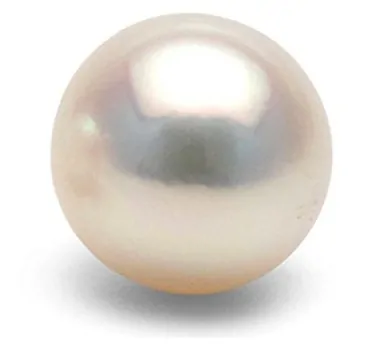
Table of Contents
Most gemstones are formed over thousands of years deep within the earth. But what sets pearls apart is that they are organic gemstones, created by living creatures in water. Pearls are unique and beautiful, unlike any other gemstone out there. Whether freshwater or saltwater, cultured or natural, the pearl formation process is the same.
Let’s take a look at this unique process that results in a lustrous, shimmering gemstone.
How Pearls are Formed – Types of Pearls
There are two main types of pearls: natural and cultured. While both types of pearls follow the same formation process, the initial step is what separates the two.
Natural Pearls
Natural pearls are formed in freshwater or saltwater bodies by either mussels or oysters respectively. When an irritant, such as a piece of shell, finds its way into the creature, the mollusc begins to coat it with layer upon layer of a hard substance, known as nacre, to reduce the irritation and ease its discomfort. Over time, these layers of nacre gradually grow into a pearl. The longer a pearl remains in the creature, the larger it becomes.
You may have heard that pearls are formed when a grain of sand gets into an oyster. This is, in fact, a myth as a grain of sand is much too small to stimulate the secretion of nacre.
Cultured Pearls
Cultured pearls are formed in much the same way as natural pearls, with one main difference. The irritant is implanted into the oyster to stimulate the pearl forming process. This is known as nucleation. Here, trained specialists carefully cut a little slit in the oyster’s or mollusc’s body and then implant a beaded nucleus in the creature. The creature is then placed back into water and left to do its work. Like natural pearls, humans have little impact on the final result of the pearl. It is largely left to chance. However, with advancements in pearl farming technology, farmers can now see whether the oyster has begun forming the pearl and if the pearl is forming as required, through regular inspections and x-rays.

Culturing pearls can take several years. When the pearl is harvested too quickly, the nacre will be too thin, which affects the luster and durability of the pearl. When the pearl is left for a longer period of time to grow slowly, the result is a lustrous, large pearl.
The largest pearls on the market today are South Sea Pearls, which can take up to 3 years to grow. Compare that to Akoya pearls, which are typically harvested within 6 months but are much smaller in size.

Depending on the farming techniques and the individual farm, the entire process can take up to about 8 years for high quality pearls to be harvested. From all the gems that are produced, only about 5% are of true gem quality.
What is Nacre?
Nacre is the organic substance that is secreted by the mollusc to coat the irritant with. It is also known as mother-of-pearl and is the hard, iridescent, crystalline substance that forms the beautiful, lustrous part of the inside of the shell.

Nacre is made of crystalized calcium carbonate (the mineral aragonite) and conchiolin. Conchiolin is a type of protein that works as a glue to hold the substances together. Usually, the first coating that the mollusc layers the irritant with is conchiolin, which ensures that the subsequent layers of nacre will tightly fit around the nucleus. The combination of these two ingredients results in a substance that is lighter but harder than even concrete.
If we look at a cross-section of a pearl very closely, we’ll be able to see the thousands of layers of nacre that the pearl is made up of.

It’s important to note that this process is not smooth and continuous. Many times, the layers aren’t even or perfectly fitting, resulting in bumps, ridges and uneven blemishes on the pearl. This is why out of every 10,000 pearls, only a single pearl may be of perfect gem quality. The ridges and swirls on a pearl are known as the pearl’s fingerprint and is unique to that particular pearl, much like a human fingerprint.

When we think about pearls, the immediate image that comes to mind is the perfect white sphere, but in reality, only about 5% of pearls produced are of such quality. Pearls occur in a range of colors and shapes and while historically these were deemed worthless, today with the trend for unconventional jewelry on the rise, baroque shapes, and unique pearl colors are more in demand.
Nacre and Pearl Luster
The luster is the most important factor of a pearl, as it is what sets a pearl apart. What we know as luster is caused by light that travels into the many layers of aragonite and then is reflected back out to the viewer. The larger the pearl, the more layers it contains and the more intense and higher quality the luster. Larger pearls with thicker nacre often have the best luster. These are also the most valuable.
Pollution and Pearl Formation
For natural and cultured pearls to form, the conditions of their environment must be stable, clean and of the right temperature. With global warming and pollution increasing, the conditions for natural pearls to form is in disorder. This is an issue for saltwater and freshwater cultured pearl farming as well, as farmers need to keep ahead of changing conditions and ensure that their molluscs are in the right environment to continue creating pearls.
Regardless of the type of pearl you choose, the fact remains that each pearl is a unique miracle of nature. This is a rare instance where a creature’s natural defense mechanism results in an awe-inspiring by-product.









